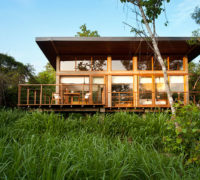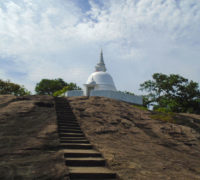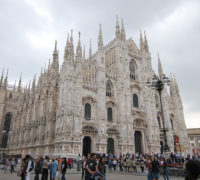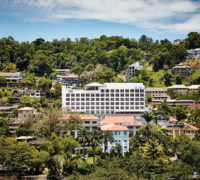Colombo, 24 October 2016: Hemas Holdings in partnership with Minor Hotels is pleased to announce the launch of the second Anantara resort in Sri Lanka. Anantara Kalutara Resort, offering 141 guest rooms, suites and pool villas, is located on the Kalutara peninsula between the Indian Ocean and Kalu Ganga providing coastal, river and lagoon frontage.
The property was originally designed by the late Geoffrey Bawa and is surrounded by tropical gardens, coconut palms and the shoreline. All 127 guest rooms come with a wine humidor as standard with interconnecting, accessible and poolside guest rooms available. The 05 Suites are set apart by an elegant lounge with the One Bedroom Presidential Suite boasting a private plunge pool and sundeck. Suites and villa guests can listen to music on the Bose Bluetooth speaker, and special requests are taken care of by the Villa Host. The One and Two Bedroom Villas feature an enclosed garden terrace offering seclusion whilst swimming in the private pool, sunbathing on the deck and dining al fresco. For holidays with family and friends, some of the One Bedroom Garden Pool Villas feature interconnecting gardens.

The resort has a choice of three restaurants. Spice Traders invites travellers to choose between Thai, Indian and Chinese cuisines. All day dining restaurant Olu offers international classics and spicy Sri Lanka specialties, whilst refined Italian tastes can be found at Acquolina. Open at dusk, The Upper Deck is the perfect place to enjoy a sundowner and light bites, while Dining by Design offers a collection of connoisseur menus with a personal chef and butler, in intimate settings for tailored private dinners.
The resort’s Anantara Spa, which is one of the largest spa facilities in Sri Lanka, offers 10 treatment rooms with holistic Ayurvedic therapies, Asian and western spa treatments. The double-story space features a yoga and meditation pavilions and is surrounded by a lotus pond.
A range of leisure facilities is available for guests to enjoy, whether for romance or quality family time. The Watersports Centre offers a range of activities including jet skiing, water skiing and banana rides. Guests can work out in the gym whilst taking in the river view, or raise their game with a personal trainer. There are two swimming pools – the lagoon-side pool with its Jacuzzi jets and children’s section ideal for families and the ocean view pool offering a tranquil escape.
Family-friendly services begin on arrival with children receiving special treats. Adventurer Club engages youngsters in cultural activities, outdoor games and action-packed excursions. Relaxation is a pampering delight with special family spa experiences. Children can enjoy a range of fun treats, such as a chocolate oil massage and hair braiding. Teen girls can refresh their look with facials, manicures and pedicures, and teen boys are expertly groomed. Dedicated packages for ‘Mum & Me’ and ‘Dad & Me’ allow parents to share unique spa time with their children. Upon departure, a keepsake gift is given to the children.
The resort offers three meeting rooms and a 500-seat conference centre, slated to open in March 2017. A limousine service is available for trips between the resort and Kalutara South Station and Colombo’s Bandaranaike International Airport.
The brand’s first property on the island, Anantara Peace Haven Tangalle Resort, has been setting the benchmark for luxury resorts in Sri Lanka in less than one year of operation and has just been named as one of the “50 Best Resorts in the World” by Conde Nast Traveler USA.
The brands first property in Sri Lanka – the Anantara Peace Haven Tangalle Resort has set the benchmark for luxury resorts in less than one year of operation with worldwide recognition for its unique coastal setting and impeccable service. The pinnacle achievement has been the recognition bestowed on the property by Conde Nast Traveler USA with Anantara Peace Haven Tangalle Resort being names as one of the “50 Best Resorts in the World”. Anantara currently boasts 35 properties in 11 countries and the next month will see the brand debut in Oman with the opening of two luxury resorts.

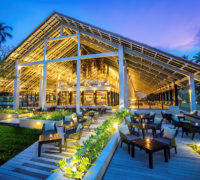
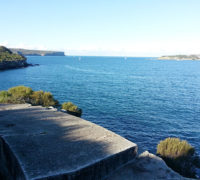



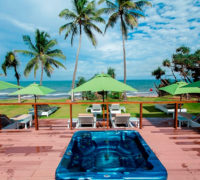



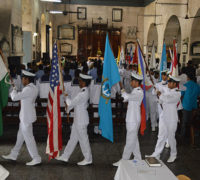
 160 years later the mission still flourishes despite facing countless hardships. Extracts from journals of the chaplains over the years provides accounts of insight into their daily work with devout sea borne parishioners and the ever changing waves of the shipping industry. In each port where the Mission was established there would be spiritual welfare freely available to all seafarers regardless of race, colour and creed. The two World Wars placed heavy responsibility upon the Mission where its activities enormously surrounded in ministering to armed forces, and Merchant Navy suffering in ports devastated by air raids. Despite the pressure on the Mission was intense during this era, queues of unemployed seamen outside Flying Angel clubs looking for food, accommodation and care were seldom turned away. Throughout its life the Mission has changed and adjusted with the industry to cater to the needs of seafarers, with now over a network of chaplains, staff and volunteers in over 200 ports world-wide in over 50 Countries catering to the needs of those at Sea. Thus the rich history behind the Church and its current Mission to the Seafarers is indeed a great value to our heritage and culture.
160 years later the mission still flourishes despite facing countless hardships. Extracts from journals of the chaplains over the years provides accounts of insight into their daily work with devout sea borne parishioners and the ever changing waves of the shipping industry. In each port where the Mission was established there would be spiritual welfare freely available to all seafarers regardless of race, colour and creed. The two World Wars placed heavy responsibility upon the Mission where its activities enormously surrounded in ministering to armed forces, and Merchant Navy suffering in ports devastated by air raids. Despite the pressure on the Mission was intense during this era, queues of unemployed seamen outside Flying Angel clubs looking for food, accommodation and care were seldom turned away. Throughout its life the Mission has changed and adjusted with the industry to cater to the needs of seafarers, with now over a network of chaplains, staff and volunteers in over 200 ports world-wide in over 50 Countries catering to the needs of those at Sea. Thus the rich history behind the Church and its current Mission to the Seafarers is indeed a great value to our heritage and culture.